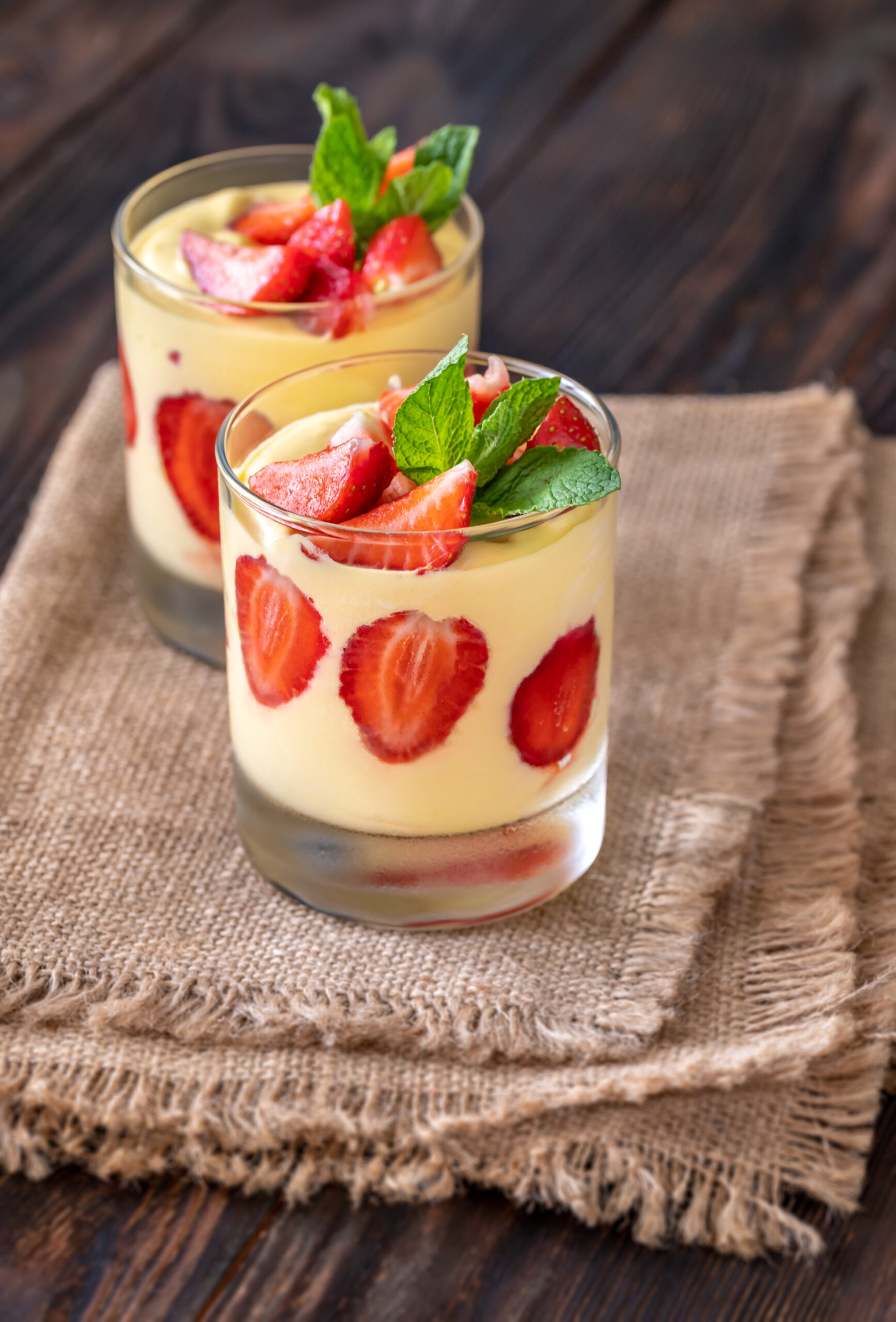Saskatoon berry, also called Juneberry, Serviceberry, Shadberries, Sugar Pear, and Indian Pear, is a purple fruit from a shrub or tree 6 to 16 feet high. Saskatoon berries are small, round, purple-black, edible, and sweet. They are often compared to the blueberry in terms of the berry’s size and texture but with an almondy flavor.
The berries can be eaten raw, cooked in puddings, pies, and muffins, or used in combination with other berries. They can also be dried and used to replace raisins in recipes.
Today, especially in Western Canada we most often enjoy them in pies or desserts or preserves for both sweet and savory applications.
History:
- Saskatoon berries were a staple for the First Nation people of the Northwest. The berries were enjoyed fresh, or steamed and mashed and then left to dry into a brick-like consistency. Pieces of these berry bricks were chipped off as needed and added to soups, stews, or simply boiled to reconstitute.
- Several parts of the shrub were used medicinally as well. Fruit concoctions were also used for sore eyes and stomach problems.
- Early European settlers ate the berries as prevention for scurvy and used the wood to make umbrella handles and fishing poles.
- Saskatoon berries have been a staple of Western Canada for hundreds of years and are now enjoyed both domestically and internationally.
Farming:
- The Saskatoon berry plant is a woody, fruit-bearing perennial shrub belonging to the rose family. It is a hardy and tolerant fruit species, resistant to low temperatures and drought, and grows in a wide range of soil types. Harvest usually begins in early July and lasts two to three weeks.
- There are 27 different varieties, (including wild ones), but only 5 are grown commercially. The 3 main varieties are Martin, Northline, and Smokey.
- The Saskatoon berry has not been domesticated. Every variety in cultivation was started with seeds from a wild berry chosen for its superior natural qualities. There have been no breeding programs to improve the flavor, size, or hardiness of Saskatoon berries. Only irrigation and disease control separate the cultivated berry from its wild ancestor.
Health Benefits:
Saskatoon berries have significant amounts of micronutrients. For an adult male, 100 grams of dried Saskatoon berries contain:
- 1/4 daily requirement of magnesium
- 1/5 daily requirement of calcium and potassium
- 1/2 daily requirement of iron
- 54% of the recommended daily intake of manganese
- 30% of the recommended daily intake of vitamin C
- 22% of the recommended daily intake of carotene
Canadian Statistics:
- The Saskatoon berry is native to the Canadian Prairies, Northern Canada, British Columbia, Alaska, Northwestern and North Central USA.
- Commercial production of Saskatoon berries is unique to Canada where current demand exceeds supply.
- The first Saskatoon orchard was planted 25 years ago, but already the industry has grown to be the second-largest commercial fruit crop in the Canadian Prairies (largest being strawberries).
- Canada has about 900 Saskatoon berry farms covering 3,200 acres, most of which are in Saskatchewan.
- Approximately 1.1 million pounds of Saskatoon berries are sold as u-pick, and an additional 5 million pounds are used for commercial processing.
Fun Facts:
- The Saskatoon berry resembles a blueberry in size and color, but it is not a true berry, it is a tiny apple.
- Saskatoon berries contain more than three times as much iron and copper as the same weight of raisins.
- In Ontario, the plant is mostly found in home gardens as a landscape shrub. Very few Ontarians know you can eat its berries!
Recipes:
This month our Verve properties throughout Western Canada and the Prairies will feature the following Saskatoon Berry recipes:
Saskatoon Berry Compote
Rainbow Trout with Saskatoon Berry Relish




